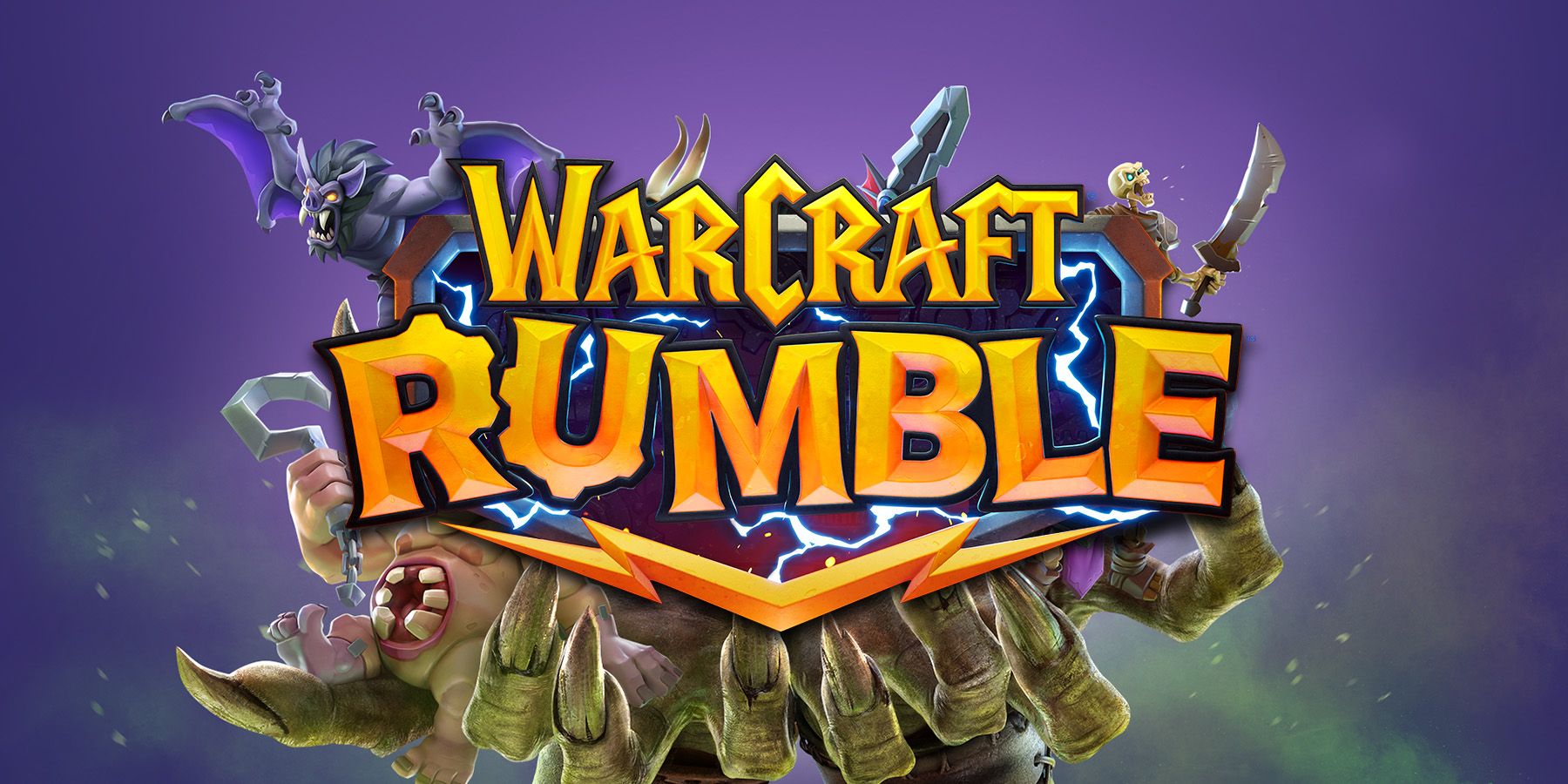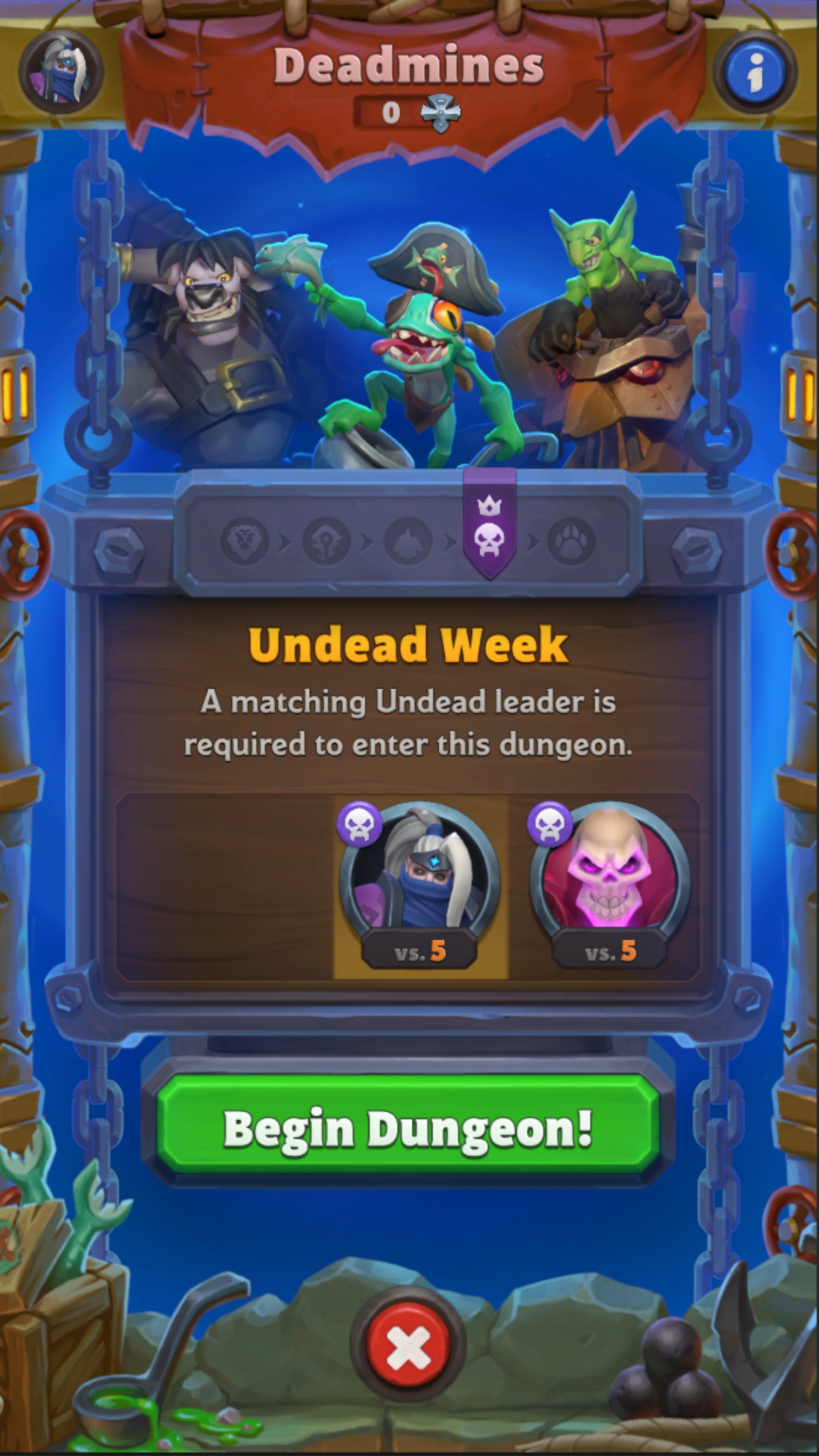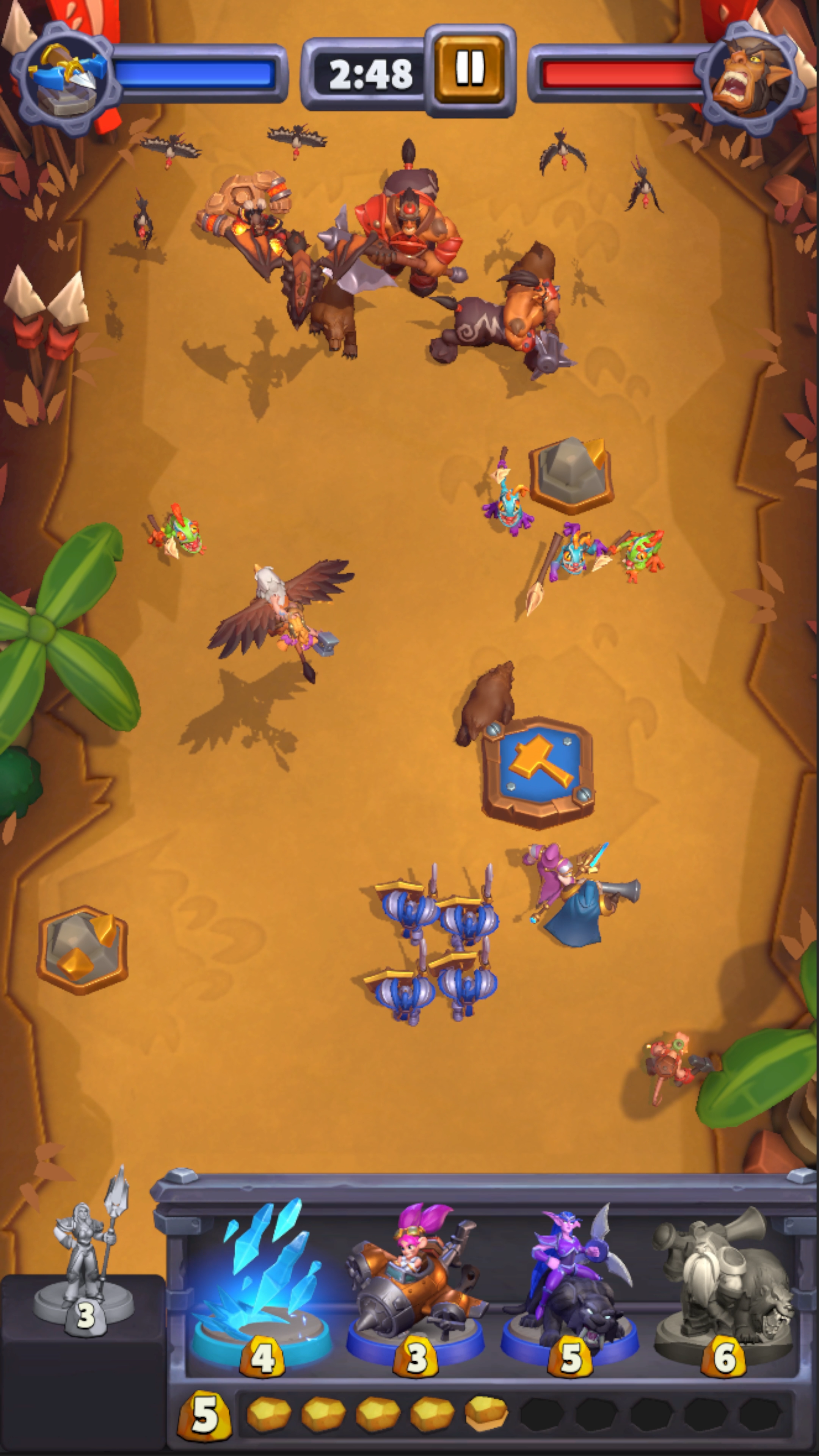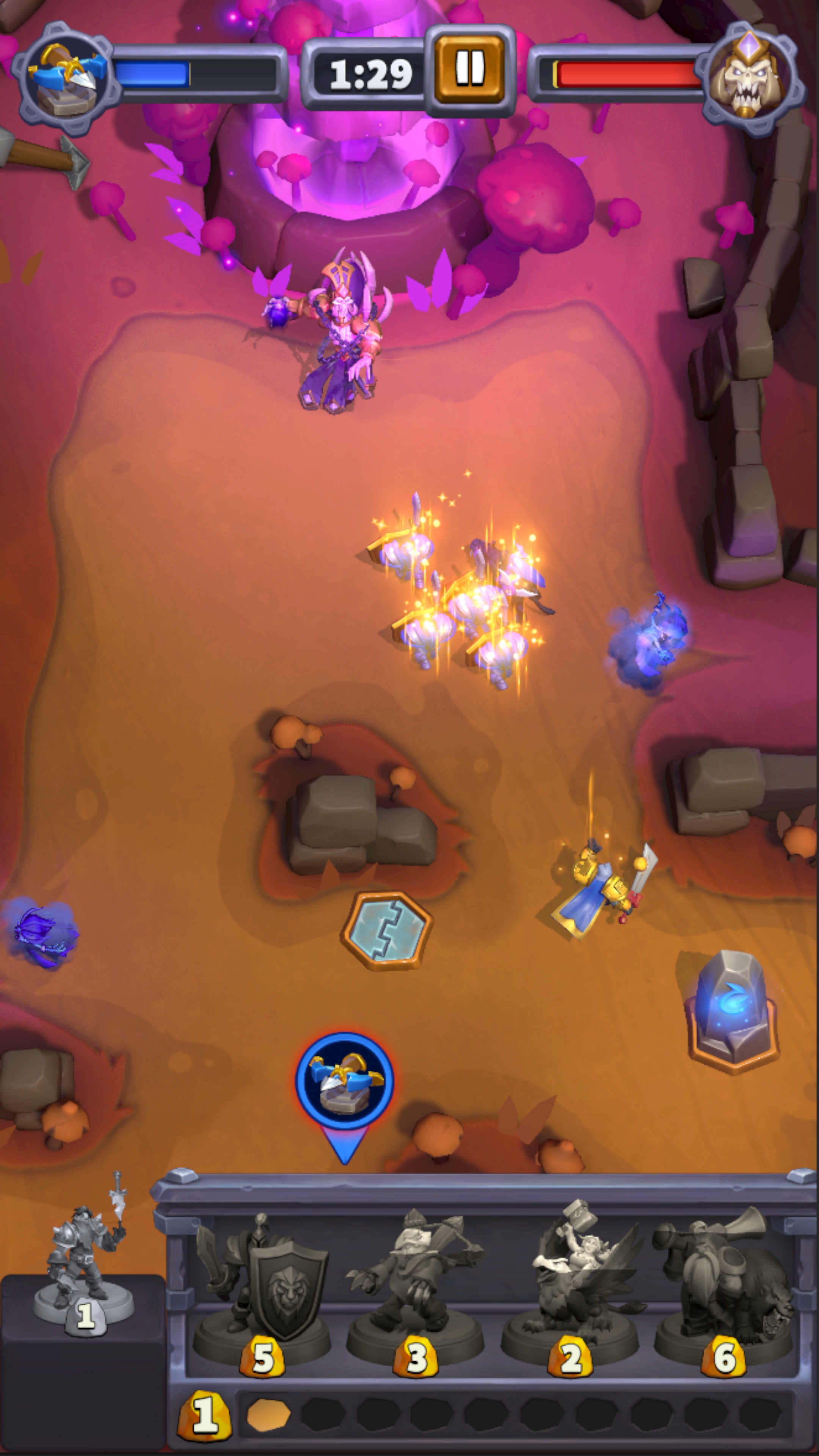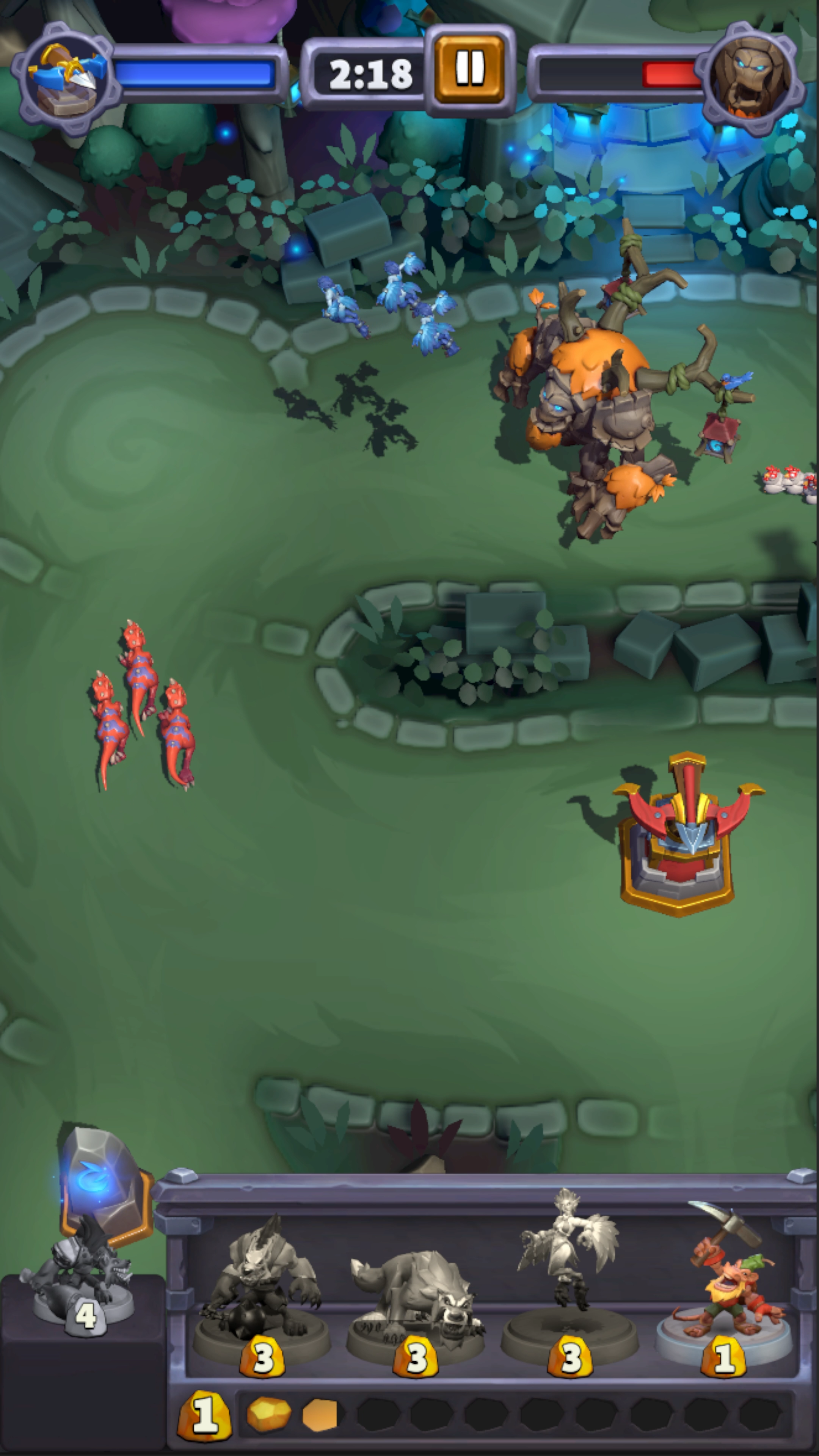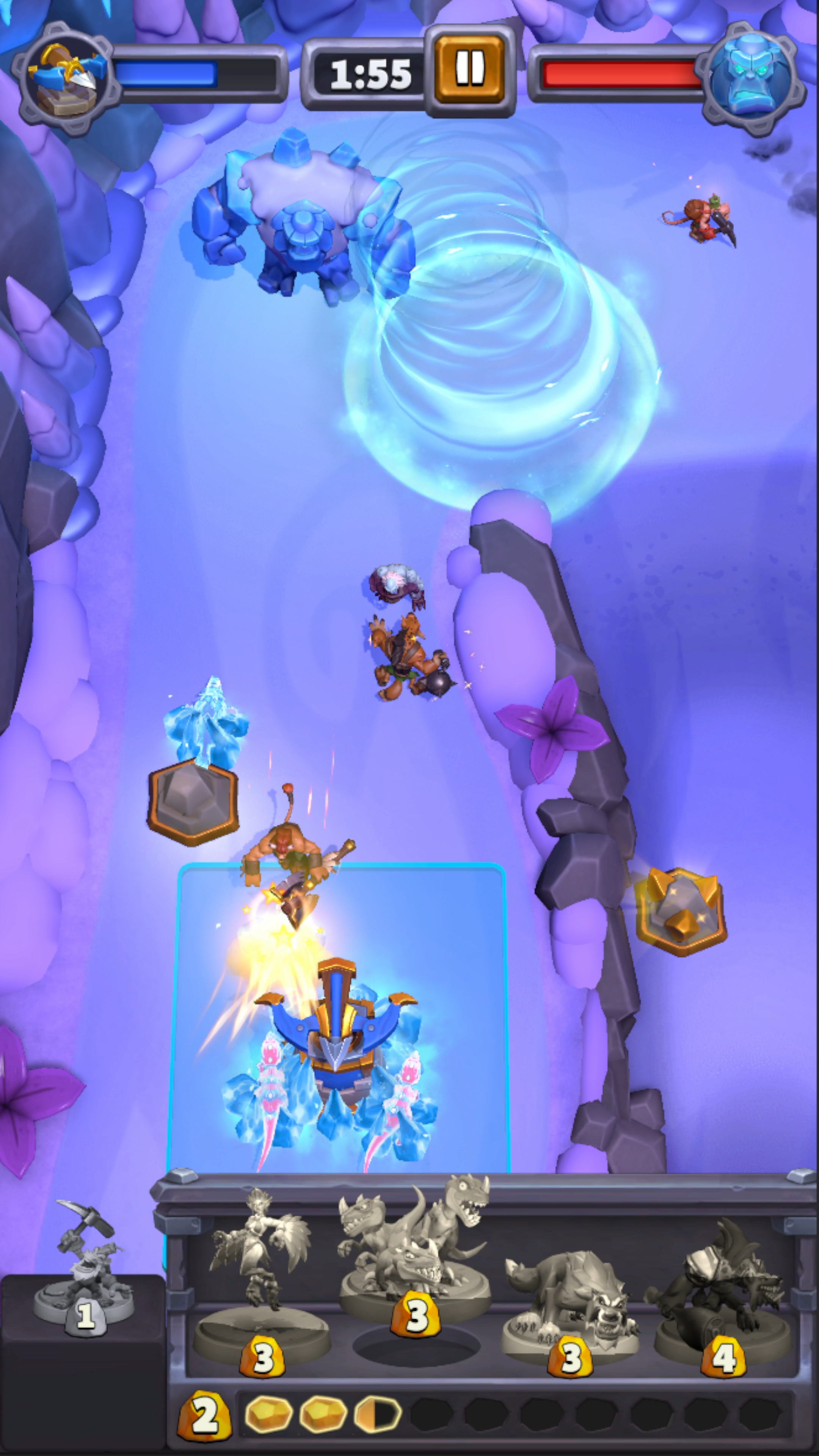Blizzard is returning to its strategy game roots with its upcoming mobile game Warcraft Rumble which has players fielding small armies of miniature Warcraft characters in chaotic tower defense-style brawls. With a sizeable collection to choose from, a lengthy campaign that can be replayed with challenging Heroic modifiers, and plenty of PvP to go around, this latest entry is shaping up to be a worthy addition to the nearly 30-year Warcraft franchise, rather than being just another mobile game offering.
In an interview with Game ZXC, Game Producer Elhora Davis and Art Director Jeremy Collins went in-depth about Warcraft Rumble's various systems and how Blizzard approached every aspect of its design. They talked about the game's numerous PvE modes, guild progression, and how the PvP meta will be routinely shaken up by an ever-changing set of modifiers so that no one team will always dominate. The interview has been edited for brevity and clarity.
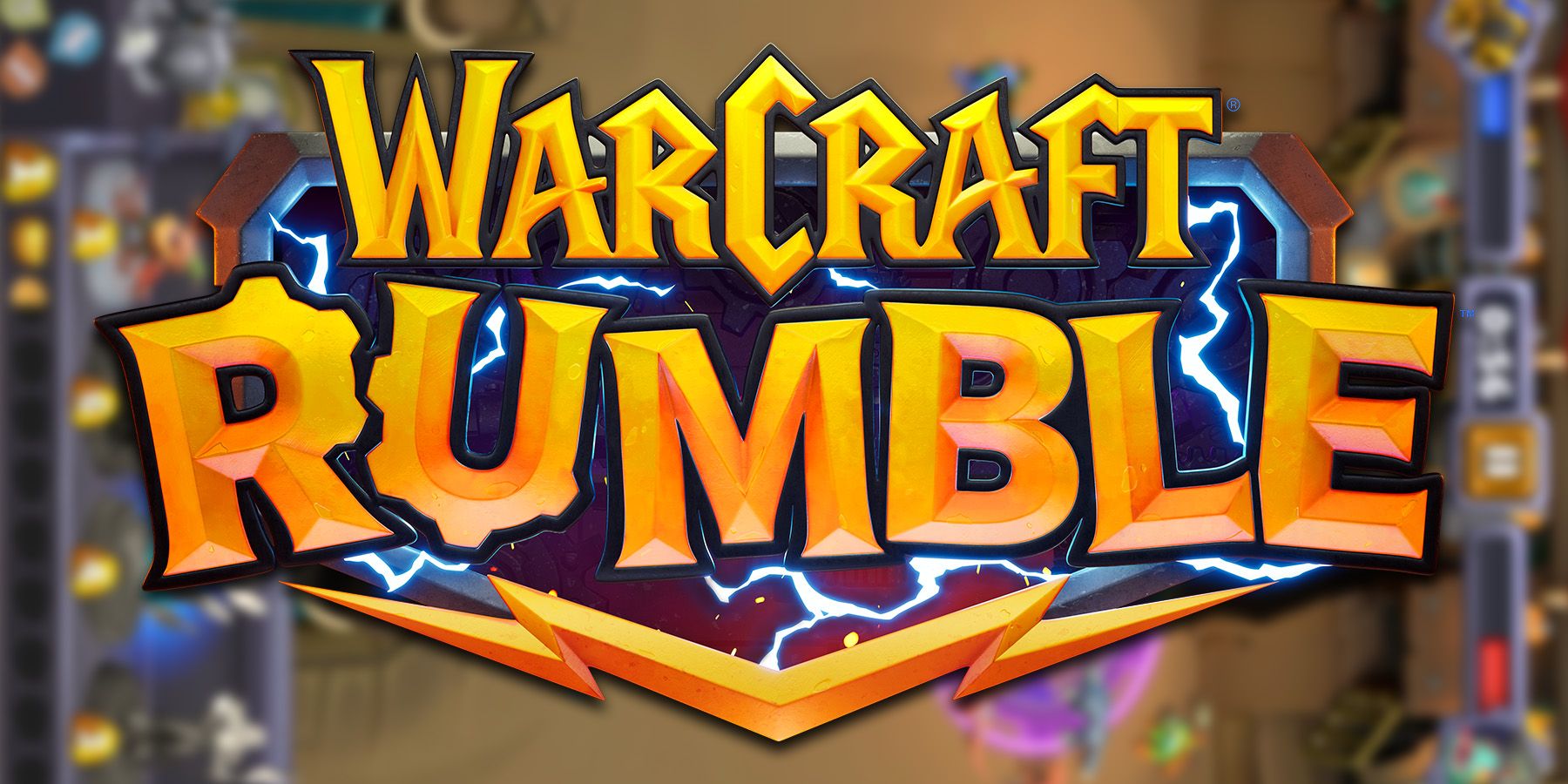
Warcraft Rumble Devs Talk Dungeon and Heroic Content
Game ZXC chats with Warcraft Rumble developers about the game's PvE content including unique dungeons and challenging heroic missions.
Q: Players can choose from a wide range of leaders and minis for their army. Can you talk about some of the different playstyles that some compositions bring out?
Davis: I think one of the awesome things about Warcraft Rumble is that each mini brings its own strengths and weaknesses, and they have their own different synergies with different units. There are some units that, in my humble opinion, are awesome to have in any deck and synergize extremely well with anything that you bring. For example, there is this unit called the Meat Wagon, which is an Undead unit. It’s this catapult guy who rolls up and fires horrendous meat steaks from just out of range of enemy towers – which are the siege buildings that represent territory within Rumble and there are deployment zones as well. I love this thing. It's so evil, it just goes in there and keeps yeeting this disgusting stuff at towers, and it is a fine addition to any deck in my opinion.
Another fun addition is harpies. They're these extremely aggro bird people who will kick the heck out of anything that they find. They're sort of frail but extremely strong. In themselves, they are a decent powerhouse, but if you pair them with this spell called Cheat Death, which grants them the ability to be immune to dying, it makes it so that their health can't go below zero for a few seconds and that, in the right moment, is so delicious. The amount of times that I've cheesed a boss by using Cheat Death with harpies is tremendous.
So there are all kinds of different play styles within Rumble. I think one of the strengths is trying to find all these different combinations and seeing what really works for you. The doors are open with there being different synergies. We're really excited to see what players find and what they can cook up.
Q: Once sufficiently leveled, minis also get access to a talent system that makes them more powerful. Can you talk about the talent system and a few examples of interesting talents?
Collins: Talents are really fun because we have 65+ collectible characters in the game. If a leader is a “deck archetype” to your army – like Thalnos is a spell leader and you're encouraged to put a lot of spells in your army, or Hogger is a cycle leader and you're encouraged to put a lot of low-cost units into a cycle deck – talents work like at the individual unit level.
So now you'll take a character that has a basic ability like say the Gryphon Rider who throws her electrified hammer from the sky down at other units, and if you choose Mighty Throw as your talent, now you get +3 range to that. That changes the dynamic of how that particular mini is played in a lot of ways because Gryphon Rider’s range is so short to begin with, and she can get sniped really easily by ranged units. With the +3 range, you can actually get a tank in front of her and have her shoot over the tank and keep her from getting sniped by those other units.
Once you combine each unit having three different talents and each army having seven units in it, it gets very very deep. The number of combinatorics you can get together and the really cool synergies that you can put together for your different units and leaders in your armies – because leaders have talents as well – is pretty sweet.
Q: With so many Warcraft characters to choose from, how do you decide which to include as minis? Do you pick characters you like and then fit them in, or do you find a gameplay role first and then fill it with a suitable character?
Davis: I think we just love them all. We have your all-stars like Grommash, Maiev, and Cairne Bloodhoof, and we also have Old Murk Eye guy who is a murloc with a stinky little eye. We loved him so much that we thought “Let's make him a collectible leader!”
Collins: I worked on WoW for about five years, so I've had a lot of time playing inside of Azeroth, and Elhora is totally right. The Cairne Bloodhoofs, the Baron Rivendares, the Maievs of the game: we have a lot of hits from Warcraft's past. But we were really excited to shine a light on some of the smaller or maybe lesser-known quest givers from WoW like Goldtooth or Abercrombie, characters that are really known for famous quests inside of the game, but don't necessarily get the spotlight outside of World of Warcraft.
We thought it was a really cool opportunity to tell a little bit more of those stories for those individual characters and flesh out their backgrounds a little bit further. It's been really fun in general to play within Azeroth because it's this limitless palette for really fun stories to have. We've got 30 years of beautiful art and lore and fun stuff that we can utilize for Warcraft. It's awesome. We have a few easter eggs, too, if you look hard enough.
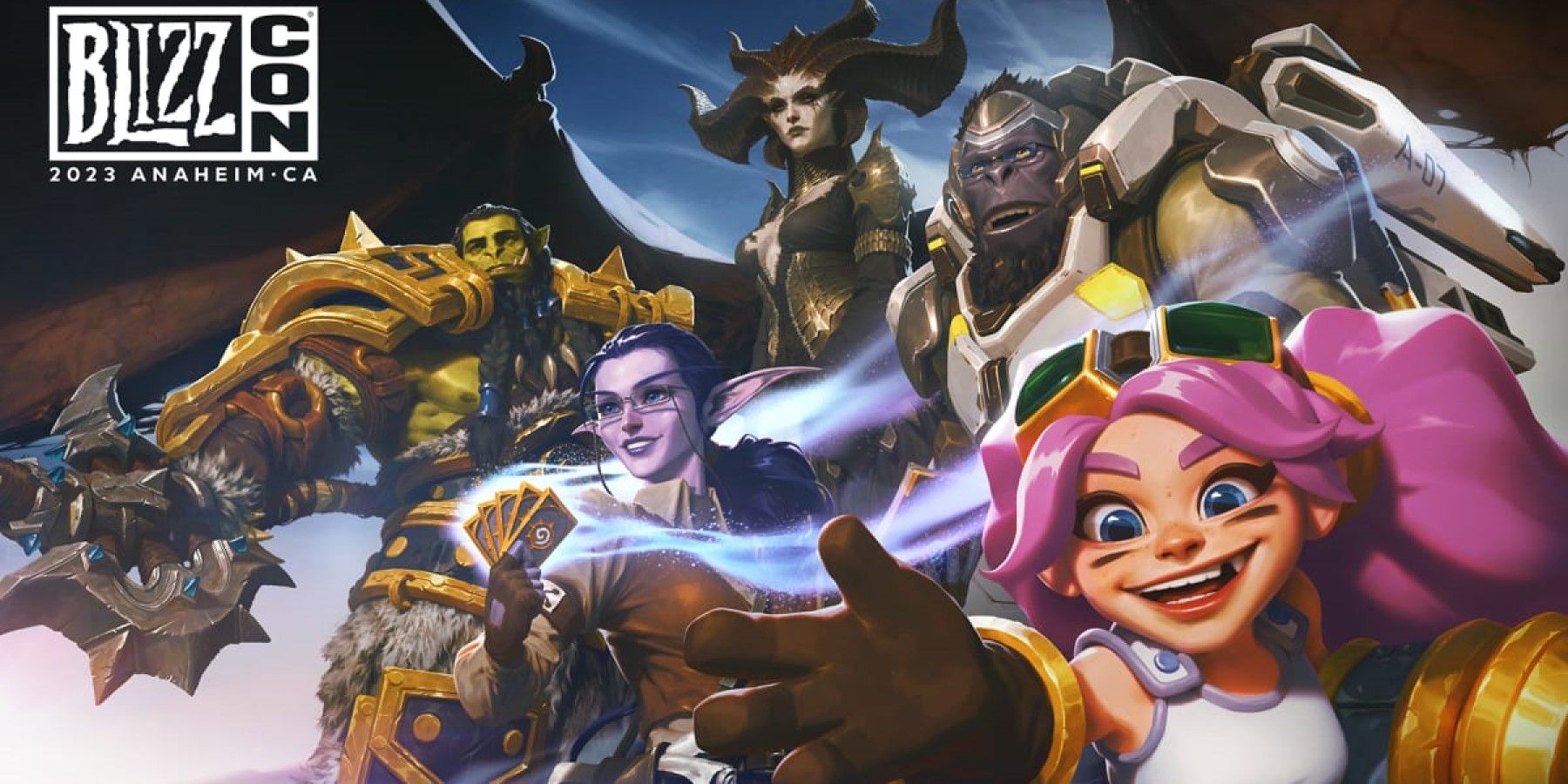
Blizzard President Confirms Which Game Franchise Has the Most to Reveal at BlizzCon
Blizzard president Mike Ybarra confirms which of the company's video game IPs has the most new stuff to reveal at BlizzCon in November.
Q: There are also dungeons and raids. How do these differ from the standard levels?
Davis: One of my favorite things about Warcraft Rumble is the campaign because it's this focused single-player experience that has the extensive cast of Warcraft characters that we just talked about, and each map is its own puzzle. It's also a long-term goal that can be completed at your own pace, and it serves as one of our progression paths into getting more minis and unlocking more features. It's the backbone of unlocking stuff in the game.
But with dungeons, they differ from the campaign in that they are a three-map gauntlet. First of all, they are family-themed with rotating families based on the week. We have five different families: Beast, Undead Blackrock, Horde, and Alliance. Depending on the week, it will determine the family that you are permitted to enter the dungeon with.
When you first enter the dungeon, you pick your specific leader, and you then pick a dungeon relic, which will boost your army with a unique power. One example that I really enjoy is Really Big Candle. Our kobolds are little guys that go around and collect gold, and Really Big Candle adds 25 levels to your kobolds and basically makes them these swoll nasty little rat men and they're extremely powerful. It's hilarious. Kobolds have this single-minded purpose where they mine things, but then when they reach bosses, they’ll actually start attacking them.
We also have other other relics like Glazed Cannon which will make it so that your minis will have half health, but they'll do double damage, which opens up opportunities for dealing a ton of explosive damage in your pushes and pairs nicely with some of the more preservative spells that we have in Rumble as well.
When you clear a boss, you pick another relic, and then you clear the next boss, and you pick another relic until you get to the end, and you have two chances. So if you lose two times then you're out, but you can always try again.
Once you've cleared the dungeon, you can get an upgrade for your specific leader, which will grant a level on the spot to whatever mini occupies a specific slot within your deck. It could be flying, or it could be family-specific or what have you.
One of my favorite dungeons is Blackfathom Deeps, and Aku’mai makes his return within Rumble. The fight has different heads of Aku’mai appearing and they will have different personalities. I won't spoil it too much so that you can experience it, but once you defeat each head, the map expands for you to then go in and push to defeat Aku’mai proper. So it is very different. The overall play will kind of be the same, but how you express yourself may be different, and it's a different kind of style going through a gauntlet versus a single puzzle.
Q: Like World of Warcraft, players can also join guilds in Warcraft Rumble. How do players work together in guilds, and how are they rewarded for participating?
Collins: I would say PvP in general is where guilds shine the most. You group up with about 15 of your guildies, and then you can battle PvP. You can use guilds to chat strategy and figure out what your team's next move is.
We also have this really cool social feature called War Chests. The Arclight Rumble arcade machine has a machine inside of it, and that's the War Chest. The War Chest collects the different kinds of “juices" of the five different families that are in the game: Horde, Alliance, Blackrock, Undead, and Beast, and in your guild, as you beat various foes and climb the ladder in PvP throughout your journey depending on which leader of whatever family you are using, you're actually contributing back to those War Chests kind of like guild goals.
Each of the five different families has its own mini goals within its own track, which are tomes where you'll get a lot of unit XP for filling up the meters for the five different families. Once you fill up all five of those, we have three large seasonal rewards at the top of the War Chests that are either a new emote for the game, new cosmetic skins for towers, or possibly a new cosmetic skin for kobolds. There are a lot of really fun chase items to go after as you're already trying to chase that top level, which is Arclight Mastermind, our highest level of PvP mastery.
It's been really fun to play against people in soft launch during PvP and get wrecked as often as I do. It's amazing to be developing this game for six years and think you're good and then actually get out there and then get instantly wrecked by it.
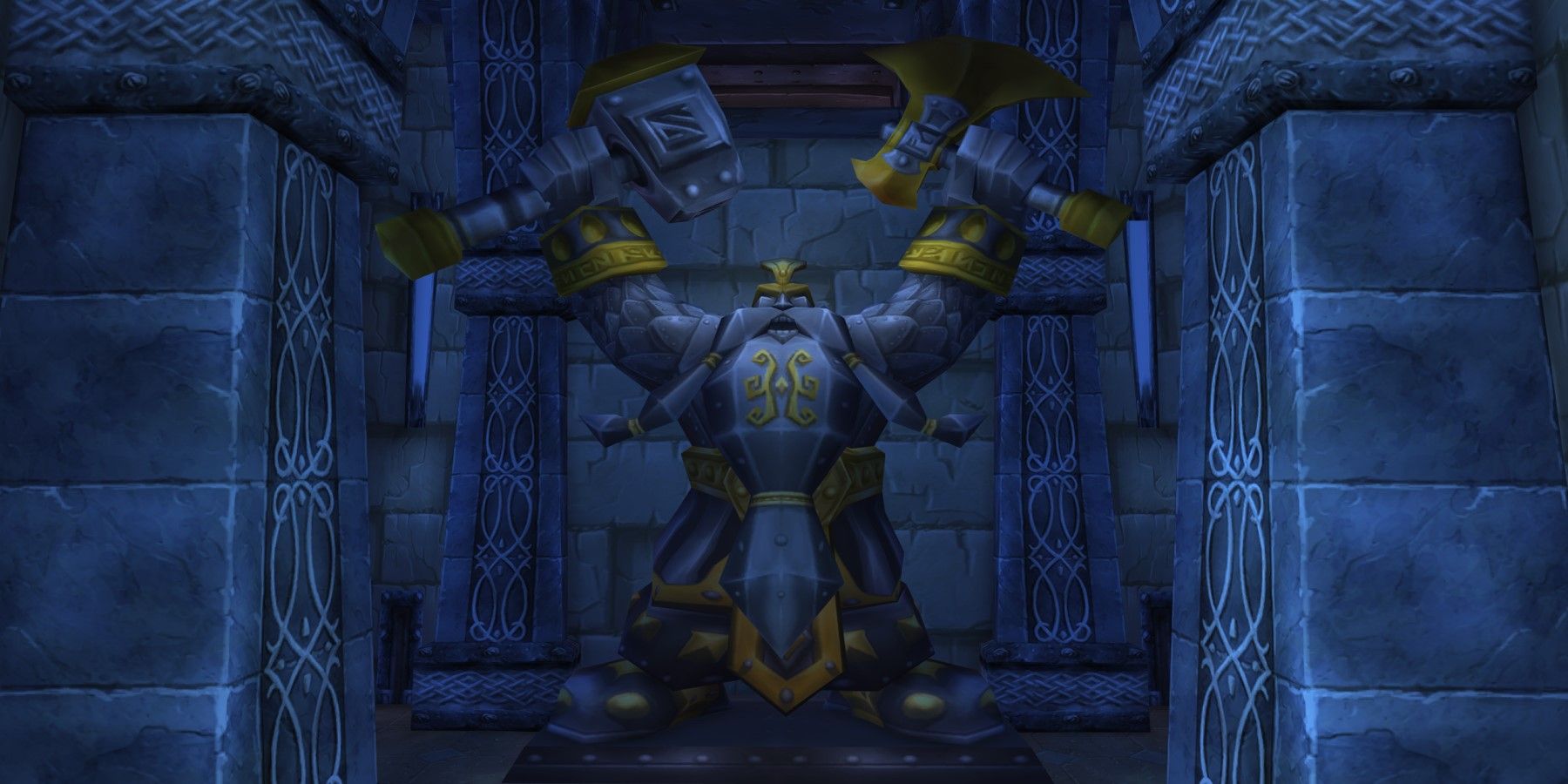
Rumor: World of Warcraft Achievement May Hint at the Next Expansion
With BlizzCon just weeks away, a new rumor surrounding a datamined achievement may indicate what the next World of Warcraft expansion could be.
Q: Speaking of PvP, how does PvP play out moment-to-moment compared to the other modes?
Davis: In terms of the moment-to-moment gameplay it is much similar to playing a campaign mission except that there is a person on the other side, and they're probably very good, as has been mine and Jeremy's experience.
There are some things that I really enjoy about Warcraft Rumble PvP in particular. For example, the bedrock for our PvP is that we wanted to be able to have an ever-changing meta. Within a given PvP season is a tumbling meta: that means that the map changes, the towers change, and the modifier will change. So in some cases, it might be that gold income is increased or that mini behavior will change in some way. Maybe a mini will level up every time you play them, or that kind of thing.
There are different kinds of ways that modifiers will come into play. With that ever-tumbling situation with the maps and towers and modifiers there's no one mini or one deck that stays prime for the whole time because it changes depending on the advantages and disadvantages of a given paradigm. That changes with regularity, which is really, really interesting. It means that you're always having to engage a little bit like “What do I have that can fit well within this meta?”
That way, we keep things staying really fresh. Another thing that's cool is that in participating in PvP, you get a bunch of rewards for progressing and playing matches and accruing honor, and you'll get experience and you'll get all kinds of interesting rewards as you progress including special emotes and that sort of thing. So there are many reasons to jump into PvP.
Collins: I think it's the tower types that are the real differentiator for me. In a PvP game, I'm used to coming in with my one great army and I know how to play that one army really well. But because we have different tower types, and because you never know if you're going to be going up against a single target tower or a cone damage tower or an AoE tower, it causes you to really have to think like a tactician when you're going into each of the matches, instead of just blindly or rotely going “Okay, I know how to beat them. I know how to play this deck really easily.”
It keeps you on your toes, and in my opinion, I feel so much more gratified when I finally defeat my enemy in PvP because it feels like an outsmarting moment. It's quite cool.
Q: The minis fall into five thematic families, as you mentioned. How would you define each of them in terms of their playstyles?
Davis: That is an incredible question. I think each family has its own identity, and there are certainly playstyles that lend themselves well to one family over the other. I think that leaders play a really significant part in that.
You've got leaders like Jaina on the Alliance and Bloodmage Thalnos on the Undead side of things who heavily benefit from spells. Jaina will actually augment the power of spells, where Thalnos will be augmented himself by you using spells. There is a lot of identity within leaders, but I think that a real strength of Rumble is that you can present your own identity with the kinds of units that you use. Maybe you like using Jaina because you happen to really enjoy using spells. Well, you can have any kind of combination of minis within that deck, and you can find your own personal synergy. You're not really limited in what you use and the synergies that you have.
For example, spells aren't exclusively an Alliance thing. There are all kinds of other spells all across the different families. You could make this awesome melting pot of things to go and service “the Jaina agenda” as it were, of having a bunch of different spells. There are cases where leaders and their talents will influence your tactics. There are tactics that work and minis that work especially well with certain leaders.
With Baron Rivendare, one of his talents is that nearby skeletons are bloodlusted. So you're gonna be like, “I'm gonna play all the skeletons that I can possibly play because they're gonna go crazy.” Bloodlust will increase the speed and the attack power of units that are affected by it. So there are these kinds of synergies that you can make, but you have a lot of freedom. I think leaders lend identity in a lot of ways, but as a player, your identity can be expressed in endless enumerations of the combinations of minis that you choose.

Rumor: World of Warcraft Achievement May Hint at the Next Expansion
With BlizzCon just weeks away, a new rumor surrounding a datamined achievement may indicate what the next World of Warcraft expansion could be.
Collins: There are certainly similarities within the different families like Beast family is very crowd-focused. There are a lot of units in the Beast family that are multiple minis per unit that come out onto the board. There are definitely overarching similarities, but a lot of it is really based on the leader that you jive the most with. It really depends on what your preferred playstyle is, in a similar way to Magic the Gathering where if you have a black-red deck, you're probably gonna be playing very aggressively. If you have a blue-green deck, you're probably going to be playing control.
We have similar archetypes inside the game, and it really depends on what kind of leader you really want to – like Elhora said – express your army through. And then there are units, too, that are just fun to make me armies out of. You can get Angry Chickens, which is like nine angry, pissed-off chickens, bloodlusted and stealthed in the game, and that is very annoying to AI and other players.
Q: In addition to deploying minis, players can also interact with the environment with teleporters and switches to change path directions. How do you approach the level design in Rumble so that it impacts player tactics?
Collins: In a lot of ways, one of the strongest features of our level design is the over-under that we have. It's something that I'm not super familiar with in other games in our strategy genre. The whole idea of high ground versus low ground really opens up a whole wealth of opportunities through your units. There are also edge cases where if you have a flying unit on the low ground, they'll actually fly over an overpass, and if there's a unit on that overpass, they'll take care of that flying unit if it's not a ranged one.
Timing and placement of the units is where most of the strategy lives and shines for our game. Knowing what to play and when to play at any given moment so that you can win these individual skirmishes that are happening all over the map. That's why we call not only the tone of the game but also the level design “joyful chaos.”
It’s this idea that there are fires happening all over the map, and you're like the chef trying to put out every single one of them in different places. That's where I think the game shines the most. There are some maps that have four scrolls: they're two by twos. So you actually have to scroll quite a bit to get from one side to the other, and you might be like “Oh no, something bad happened over here and now I gotta run over here!” That whole gameplay loop is very, very fun.
Davis: I think timing is this huge component that I initially didn't understand. Once I got the hang of it, lots of things opened up. Like, “How can I bluff that I don't have gold? How can I be playing mind games with what I have and place them at strategic times at the worst possible time for my opponent?”
This actually does remind me of this feature that we have called Heroics. Basically, Heroics presents this new challenge with increased difficulty that you unlock partially through the campaign once you put a dent in it, and you've made progress, and you've started to understand your collection, and you're starting to build preferences. They're the same campaign missions, basically, but at a lot higher level.
When we were designing these encounters, we asked ourselves, “What is the one thing that if we change, would change everything about this map?” For example, we have this map called Dockmaster wherein you've got this dockmaster goblin, and he has a partner with him who is this ogre that throws barrels down two lanes of the map. He throws the barrels down one lane, and then he'll move over to the other lane and start throwing barrels down there. The original approach is like, “Okay, how can I time my push so that I am moving when the barrels aren't being deployed, so I don't get hit by the barrels?”
But in Heroic mode, he's got a friend, and they're always throwing barrels down both lanes. So how do you circumvent that challenge? That was the question that we asked ourselves, especially with Heroics. Now that players are used to seeing a level, what is the one thing that we can add that really changes everything and makes everything new?
[END]
Warcraft Rumble is set to release on mobile on November 3.

